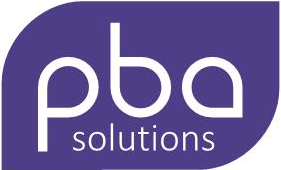Japanese Knotweed Herbicide Treatments
As with so many things in life, a little knowledge is a dangerous thing. Just as owning a camera doesn’t make you a good photographer, getting hold of some glyphosate at your local diy store doesn’t mean you necessarily hold the balance of power in the battle against the knotweed infestation in your back garden. Japanese knotweed herbicide treatment is an effective console method, but the activity should be recorded and carried out by a professional.
In-depth knowledge, backed up with real-life experience and understanding, is what makes the difference in effective Japanese knotweed herbicide treatment and this is exactly what PBA offer. Not only are our staff NPTC-certified for herbicide application (PA1 6AW), they are also PCA Invasive Weed qualified technicians who provide the highest levels of technical expertise within the industry. Our know-how is second to none, which allows us to deploy treatments effectively and quickly bring a knotweed infestation under control.
The correct use of herbicides to control knotweed is very effective and is often the most economical and most environmentally friendly option.
Herbicide foliar Spray | Stem Injection | Weed gloves – weed wipe |
| Systemic herbicides, like glyphosate, are absorbed into the plant via its leaves and then translocated to the roots or rhizomes (underground stems) which are the most important part of the plant to control. Glyphosate is highly effective against knotweed because it attacks the rhizomes, where the plant stores all of its energy reserves. | Stem injection involves injecting highly concentrated herbicide into the base of selected knotweed stems. This method can be very effective and is particularly useful where spray drift needs to be avoided. Because stem injection can produce dramatic results very quickly, it may mislead the unwary or inexperienced. Injecting large stands is very time consuming and therefore, impractical. | The simplest method of applying herbicide to treat Japanese knotweed, weed-wipe is highly effective where knotweed is growing close to ornamental plants to be retained. It also works on small growths where stem injection is not practical due to stem size of the target plant. |
Extensive research has given rise to recommendations that complementary methods of control should be included as best practice, where possible, in a treatment programme. These additional treatment methods supplement and aid the efficiency of herbicide treatment programmes and can include crown severing, stem cutting and rhizome fragmentation. Where these methods are deployed, improvements to the programme include faster chemical control and a reduction in the amount of herbicide applied. At PBA Solutions we look to provide cohesive treatment programmes that minimise treatment durations and help to manage budgets.
What is the best Herbicide Treatment method?
Just as there is more than one way to skin a cat (apparently) there are a number of ways to control Japanese knotweed. But, just as with most things in life, there’s a right way and a wrong way to do it. The choice will depend on a combination of factors such as the history of the site, the amount of available growth and its proximity to other plants or water sources. Our advice is simple – seek advice!
Professional application of herbicides must be carried out by trained, NPTC certified technicians. Detailed, accurate, dated records must also be kept of any herbicide application. PBA’s technicians are well equipped so that herbicide applications are recorded in real-time on site and uploaded to cloud servers along with photographic and management plan records. All of these records are sent to the client after each site visit and are safely stored and backed up so that, if you lose a record, we can send you a new copy.

